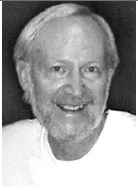“A Christmas Carol” by Charles Dickens is one of the great, enduring stories about the Christmas season. It also has a very important, underlying psychotherapeutic message.
The three ghosts of Christmas past, present and future represent three important themes that must always be addressed in therapy: a client’s past behavior; how this behavior impacts on one’s present circumstances and, if these attitudes and behaviors continue, what kind of future circumstances one may expect to unfold in one’s life.
My Hindu clients can easily relate to the three Christmas ghosts, because it fits well into the idea of karma – each behavior or action creates a certain reaction, so it is important to consider one’s actions carefully, because there are implications for one’s karma.
In fact, the Hindu sages say actions start with an idea or a thought, develop into a feeling, transform into an attitude, a behavior, and finally manifest in specific actions. So, be careful of what you think because you may have set in motion the mechanism of creating an action – for which you will ultimately be held responsible.
That has chilling or positive implications, depending on one’s thoughts and actions. Another way of putting it, is that our present existence is the sum total of all our choices, which were based on acting upon certain beliefs, ideas, concepts or motivations over a period of time. The good news is that we can change our existence by making different choices.
Of course, this means changing our thinking, a scary concept to many people who would rather continue to believe their thoughts and choices are infallibly or perfectly derived.
In “A Christmas Carol,” Ebenezer Scrooge is arrogantly convinced he has led the “perfect” life until the ghost of his ex-partner, Jacob Marley, pays him a visit. He warns that three spirits will be visiting Ebenezer, and they are his last chance to change the way he has been conducting his life in solitary, egotistic, wasteful narcissism – or face the consequences.
Whether one believes in an afterlife or not, the consequences of our actions and choices are clearly apparent in the faces, eyes and responses of people around us. They are the mirrors of our existence, our actions, our attitudes and our thoughts.
Scrooge dramatically discovers, with the help of the three spirits, how his choices have led to an empty, wasted life. One of the many consequences is he will not be missed when he passes from this mortal coil – if he continues in the way he has been living.
He decides to change and, as a result, the lives of many around him are affected in enjoyable, meaningful ways, including Tiny Tim, the young boy doomed to be a cripple if he doesn’t receive medical help. Scrooge provides this and the boy’s life is changed.
It doesn’t have to be Christmas, and we don’t have to be Scrooge to realize there are every-day parallels in this old story and our own lives. How many times would we like to go back and change an action, make a different choice, have better relationships in our lives, and feel we are living a worthwhile existence. The trouble is we can’t go back, but we can start where we are and do something about that – just as Scrooge learned.
Last week I was invited to give a dance therapy seminar with a Christmas theme in an economically depressed part of London. It would have been easy to skip this request. I had a busy schedule and was giving professional talks to psychiatrists and psychotherapists in London about my intercultural research and therapy experience in Japan.
But, a friend of mine knew I had developed and presented workshops about Christmas with the theme, “Being the Spirit of Christmas.” She felt this was what a struggling church in an ethnically diverse part of south London would appreciate.
As I walked through the dark streets from the Tube Station to this church, it was cold and misty. A police van was pulled up beside a group of teenagers, and the Bobbies were investigating some disturbance. The only bright lights were in the windows of a pub along the way.
Eventually, I found the church at the end of a long row of 19th century terraced houses. Everything looked gray and uninviting – until I walked into the church. I was greeted with warmth and moving friendliness by the priest and the members of the church, one of whom immediately thrust a hot cup of tea in my hand as I walked into the church kitchen.
No one had any idea what to expect from this Tokyo stranger, but they were intrigued by the title of the seminar and were happy to participate in a new experience.
They had arranged the center of the church into a dance space, and a group of old and young people from the congregation had gathered there. Among them was a young boy in an electric wheelchair. He had muscular dystrophy and could only move with the help of the controls on the panel of his chair.
The seminar combined sacred church Christmas music and popular songs with friendship dances and creative movements designed to initiate a sense of Christmas spirit and community. Two hours later the church hall was buzzing with laughter, dance and high spirits.
Jamie, the boy in the wheelchair, was using his controls to spin around and join in the circle of a last friendship dance, while the priest and I led some lively steps for others to follow.
Jamie’s parents were astonished at his transformation. Prior to coming to the dance session at the church, he had been depressed for some weeks. They had never seen him spin his wheelchair and “dance” with people in that way before. His laughter was the highlight of the evening experience.
But I was also delighted with the way members of the congregation, in their 60s and 70s, had participated. Maybe huffing and puffing at times, but with gaiety and spirit. Most didn’t want to go home at the end of the session. I think the spirit of Christmas was there that evening. Later, the priest and I and a few congregation members retired to the kitchen for some hot tea, biscuits and friendly conversation.
Scrooge and the three Christmas spirits would have approved of the evening, I think. I was glad I made the choice to go to this church. The challenge is to carry this kind of experience into the rest of the year.
David Tharp is a psychotherapist who specializes in couple relationship and sexual therapy, cross-cultural therapy and dance movement therapy.









_KRAACH-クリスタルバスソルト-385x257.jpg)